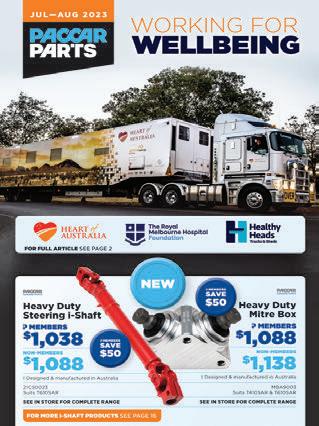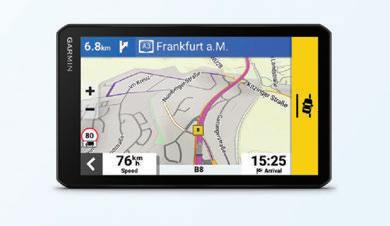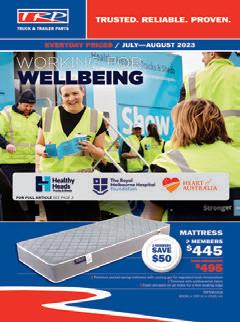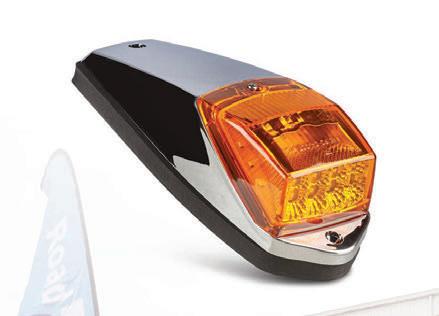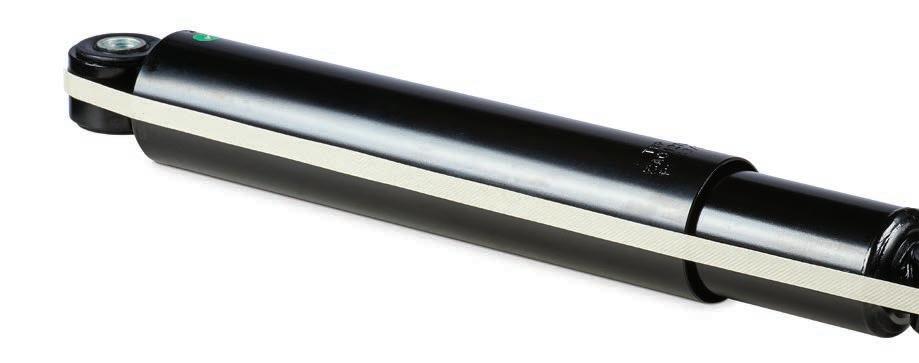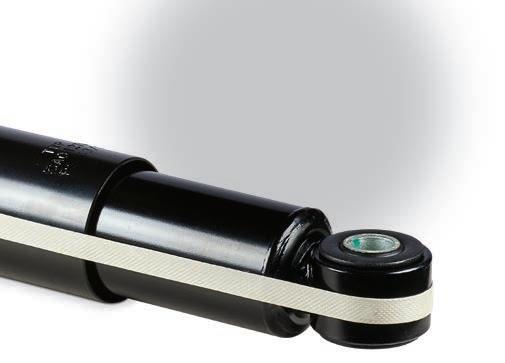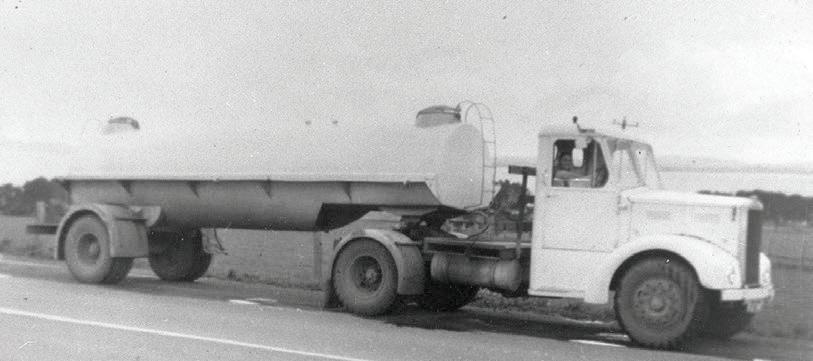
5 minute read
McColl’s reunites with its oldest living tanker driver
Back in the 1950s, he drove the first ever milk tanker for McColl’s Transport
BY DANIELLE GULLACI
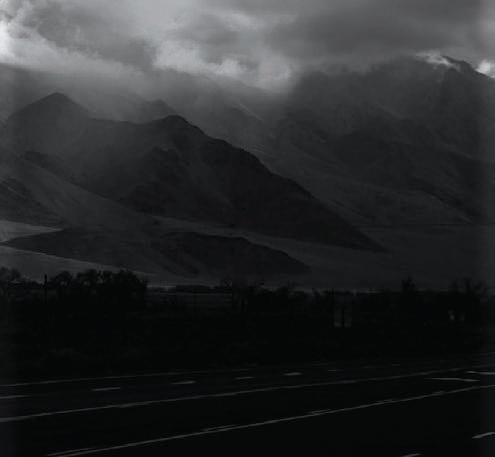
IT was around 70 years ago that this returned serviceman began working for McColl’s Transport, delivering milk from Victoria’s western district to the dairy factory at the company’s base in Geelong.


Born in 1923 and now living in Yarrawonga, Des Jones spoke to Big Rigs about how he came to be McColl’s first milk tanker driver.
The story of McColl’s started over 70 years ago, in 1952, when Stuart and June McColl purchased two F600 trucks and launched McColl’s Milk Transport in the Victorian city of Geelong. These trucks were used to pick up milk from dairy farmers around Port Fairy, which was then delivered to processing plants.
A few short years later, McColl’s purchased its first purpose-built milk tanker –and they needed someone to drive it.
That tanker had a capacity
his 100th birthday.
of 1834 gallon – or 8344 litres. By comparison, the company’s latest A-double tankers can carry 56,000 litres of milk!
Interestingly, Stuart never sold that original tanker. “It just sat in the back corner of the depot for years growing moss! His big plan was to have it painted and mounted up on the roof of the office as a sign,” explained Robert Rose, who is among the company’s longest serving truck drivers, having started there after finishing school in 1988.
“We nominated Stuart for the Alice Springs Hall of Fame in 2007 and thought it would be fitting to have his tanker parked there too where everyone could see it.”
The tanker was brought into the McColl’s workshop, where it was tidied up, with Geelong Abrasive Blasting handling the paint job. The tanker was restored within just a few weeks, so it could be brought to Alice Springs in time for Stuart’s induction into the Shell Rimula Wall of Fame that year. “And yes, it’s still on display there,” Rose added.
From McColl’s Transport’s humble beginnings, the business has grown to encompass 26 depots, six major workshops, over 250 prime movers, 800 trailers and 650 staff.
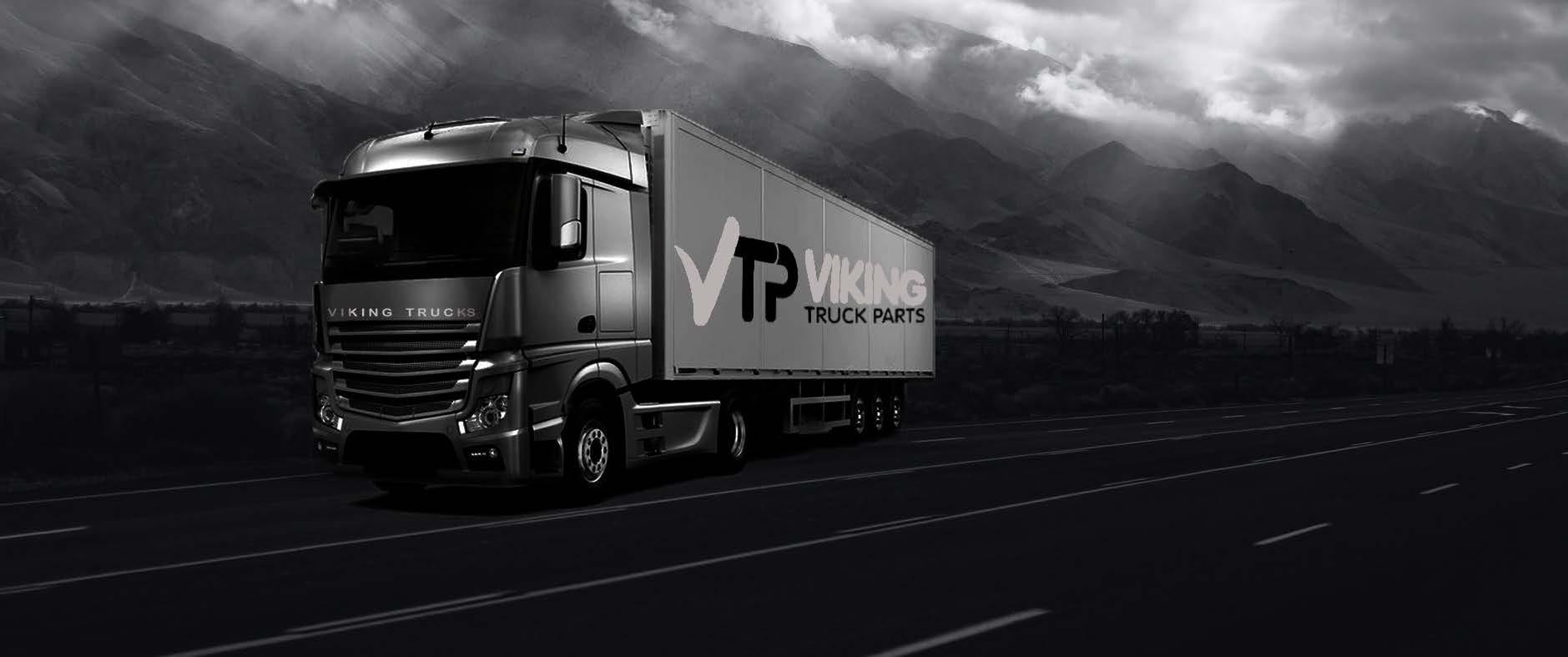
McColl’s Transport was reunited with Des after being contacted by his son Alan Jones, who believed his father may be McColl’s oldest living tanker driver – and as it would seem, he was right.
Des originally met Stuart and Joan through their local church and they became good friends.
As Des explained, “After the war, I became an electrician. Stuart was managing the biggest dairy in Geelong and he wanted to put an electrician on – so I applied for the job and knowing him so well, I got it,” he said.
As well as being an electrician for the dairy farm, Des also serviced ice cream cabinets that used brine to keep the ice cream cold and was on call 24/7.
“They had little shops everywhere. But if the ice-cream was getting soft, I had to dash out there day or night.
“After I’d been working there for about six months or so, Stuart called me in and said, look Des, I’m putting on a tanker and it’s being built at Browns Motors here. I’d like you to drive it,” Des recalled.
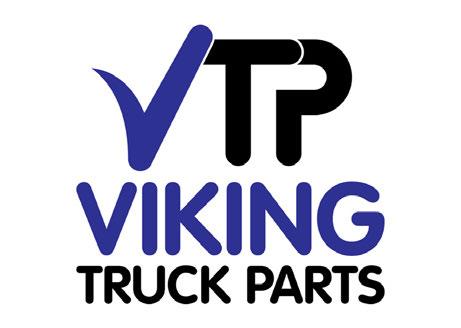
“The job I had was already pretty good and the money was pretty good too. I asked what the driving job would pay and he quoted me a figure that was way above my salary, so I took the job and did that for about 12 months.”
When asked if he had ever driven a truck prior to that, he recounted the story of how he got his driver’s licence.
“When I joined the Navy in 1940, down at Flinders, I was on the Parade Ground. I’d only been there for about three days when the petty officer got our group together and said righto, how many of you boys have your driver’s licence? We were all young blokes and I was only 17,” he said.
“No one would put their hand up. So he asked if anyone had worked in a garage or seen a garage? So I said I had a little bit of experience, but no licence.”
The experience he was referring to related to an old C-Model Ford he came across while wiring up a house and a barn in his teens.
“The C-Model was jacked up and he asked if we could put a motor in it. I asked what he was going to do with it and he said he’d sell it. He wanted 5 pound for it. This was about 84 years ago so that was a lot of money at that time. A mate and I bought it and got it going.
“When I told the petty officer this, he sent me to the garage and said, ‘See that truck, do you think you could drive it?’ I said yeah. It was a real old truck. I had to take these blokes over to the railway and get a loads of coal. I did that for a day or two. Then on the third day, they said I could go back to the Parade Ground. They handed me a licence and said, ‘You can drive any vehicle in the Navy’.”
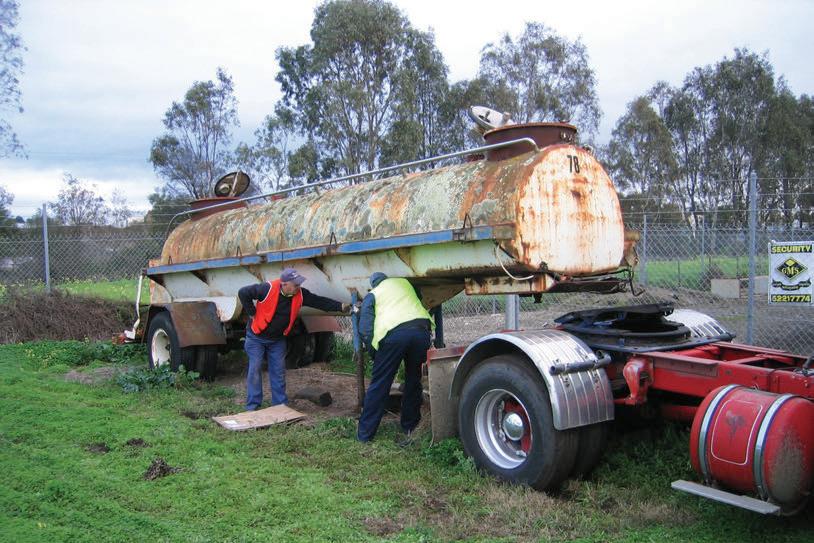
When Des left McColl’s, it was to start his own business, returning to his trade.
“It was a good job and I really liked it – I’m a bit sorry I had to give it up. But Stuart didn’t mind and got another driver. He said that’s okay Des, if I can help you in any way, let me know.”

And so together with his business partner Max Brown, Des started JB Electrics in East Geelong. But all the while he remained great friends with Stuart, up until his passing in 2013, at the age of 95.
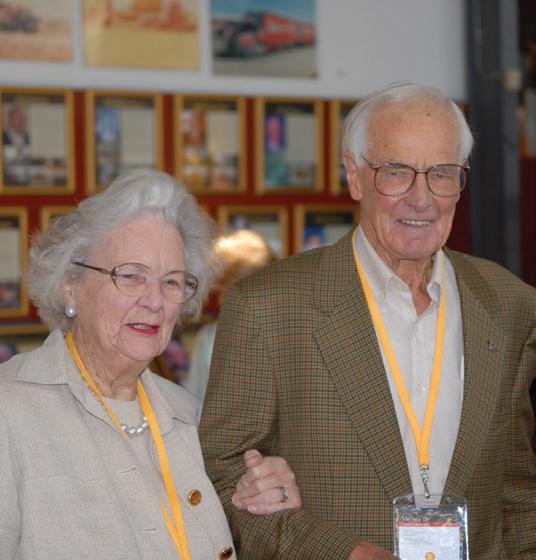

“I always got on well with Stuart, he was a real good bloke. Just before he died, I rang him to see how he was going. He wanted me to come and see him and I said when I’m down in Geelong, I’d certainly come and visit, but I didn’t get there before he died,” revealed Des, who turned 100 on May 4.
He says he celebrated his milestone birthday with “two parties at the RSL”.
Along with being the oldest living tanker driver to have worked for McColl’s, Des is also the last remaining survivor of the HMAS Canberra, which was struck 24 times by gunfire and struck by torpedo in the Battle of Savo Island on August 9, 1942.
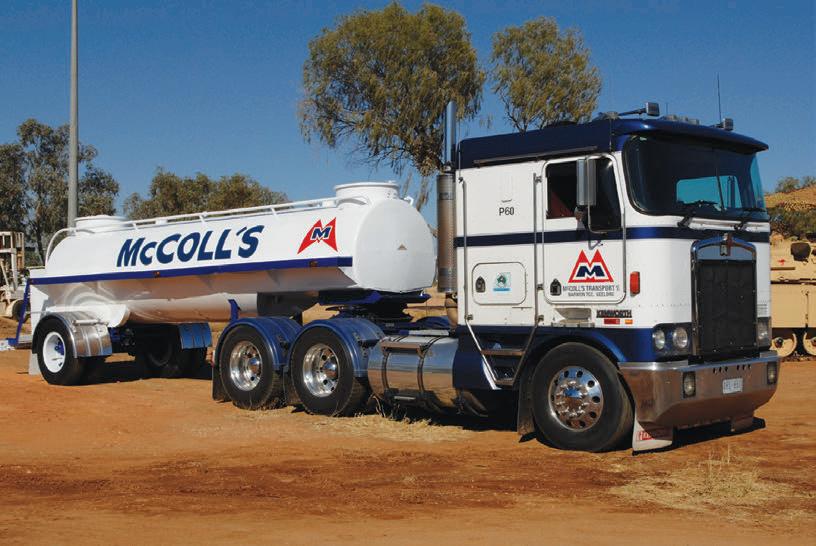
In August last year, Des visited Sydney and Canberra as a guest of honour, as the Navy held an 80-year reunion from when HMAS Canberra was lost in battle.
Of the 819-strong people on board the ship, 84 were killed and 109 wounded.
Des joined the Navy as a stoker at the age of just 17. “When I went onto the HMAS Canberra, which was my first boat, I was a thirdclass stoker, that’s as low as you can go in the Navy. Six months later I became a second-class stoker and within 12 months I was a first-class stoker.”
Des was actually working in the boiler room just hours before the ship was attacked. He finished his shift at midnight and the ship was hit at around 2am.
The wounded were brought to the upper decks waiting to be transferred. Though attempts were made to get the ship steamed up again, with the boiler rooms destroyed, it was no use – so the order came in to abandon the ship.
Des recalls swimming as fast as he could to the life raft as he had a fear of sharks.
He continued on with the Navy for several years, eventually becoming a leading hand. Though he says that’s where things went wrong. “I got the shock of my life when they said you’re off to Darwin because you’re a licenced driver – so I was a leading hand in the garage there. But I was a bit crook on that – I should’ve been on the Australia!”












